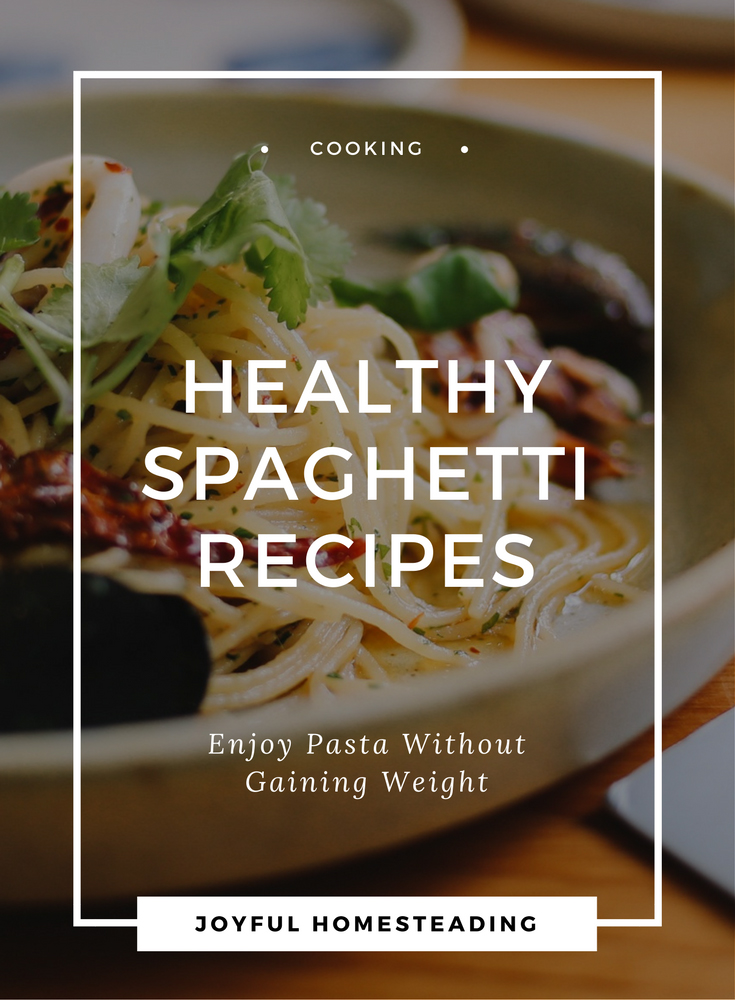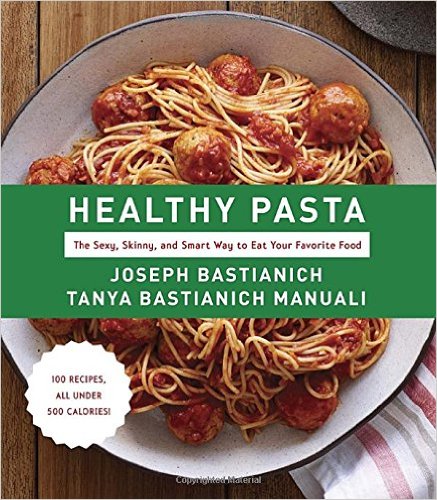Healthy Spaghetti Recipes
Healthy spaghetti recipes let you get your pasta fix and feed your body with the nutrition it needs by using pure food ingredients and good cooking techniques. Pasta has gotten a bad rap in the past few years, and many people associate pasta with unhealthy eating and weight gain.
But it doesn’t have to be that way. By choosing a good quality pasta and including vegetables and protein-rich ingredients, you can have a satisfying meal loaded with excellent nutrition.

The secret, say Joseph Bastianich and Tanya Bastianich Manuali, authors of the book Healthy Pasta, is to have a good quality pasta made from durum wheat or other good quality ingredients and cooking the pasta al dente - removing the pasta from the water when it’s still chewy enough to have some real texture and bite to it.
The more you chew, the more digestive enzymes are stimulated and the slower your eating time, making you feel full sooner.
Plus, a pasta cooked al dente has a lower glycemic index than overcooked pasta so it will have less impact on your blood sugar, preventing cravings and providing a steadier supply of energy.
Healthy Spaghetti Recipes
Include Good Quality Pastas
Also, keep in mind that you’re not limited to wheat pasta when making your healthy spaghetti recipes. There are a whole range of healthy pastas available, including pastas made from buckwheat, barley, lentils, amaranth, brown rice and kamut. Quinoa pasta is an excellent choice if you have gluten issues.
In addition to a wide range of pastas, you can add a large number of healthy vegetables and lean proteins, making your pasta a complete meal. Avoid extra fat by baking vegetables such as cherry tomatoes, eggplants, zucchini or squash.
Instead of sautéing your onions, sweat them by placing them in a little water, covering the pan and cooking them until the moisture rises to the surface and it wilts. Then add some extra-virgin olive oil once it’s softened.
The following healthy spaghetti recipes come from the book Healthy Pasta and are less than 500 calories each.
Healthy Spaghetti Recipes and Spaghetti With Turkey Meatballs
- 1 medium onion, cut into medium-size chunks
- 1 small carrot, cut into medium-size chunks
- 1 celery stalk, cut into medium-size chunks
- 1/2 cup fresh Italian parsley
- 3 garlic cloves, crushed and peeled
- 1 pound ground turkey breast
- 1 large egg, beaten
- 1/2 cup freshly grated Grana Padano
- 1/2 cup unseasoned dried bread crumbs
- Kosher salt
- 2 tablespoons extra-virgin olive oil
- 1 28-ounce can of whole San Marzano tomatoes, crushed by hand
- 1 teaspoon dried oregano
- crushed red pepper flakes
- 1 pound spaghetti
- 1/2 cup fresh basil leaves, chopped
Preheat the oven to 450 degrees Fahrenheit. In a food processor, combine the onion, carrot, celery, parsley, and garlic and process to make a smooth paste. Scrape half of the vegetable paste into a large bowl and set the rest aside in a small goal.
Line a sheet pan with parchment paper. To the large bowl, add the turkey, egg, 1/4 cup of the Grana Padano, and the bread crumbs. Season with 1 teaspoon salt. Mix with your hands until just combined. (If you like, you can fry a small patty to taste for seasoning.) Form into 18 meatballs and put on the lined sheet pan. Bake until the meatballs are firm (but they don’t have to be cooked through), about 12 minutes.
Meanwhile, bring a large pot of salted water to a boil for pasta. In a medium Dutch oven over medium-high heat, heat the olive oil. When the oil is hot, add the remaining vegetable paste and cook, stirring, until it dries out and begins to stick to the bottom of the pan (turn the heat down if it begins to burn toward the end).
Add the tomatoes and 3 cups pasta water. Bring to a simmer and add the oregano. Season with salt and red pepper flakes. Add the meatballs to the sauce. Simmer until the meatballs are cooked through and the sauce is thick and flavorful about 30 minutes.
Add the spaghetti to the boiling water. When the pasta is almost al dente, remove the meatballs from the sauce to a warm bowl and add the basil to the sauce. When the pasta is al dente, remove it with tongs and add directly to the sauce, reserving the pasta water.
Toss to coat the pasta with the sauce, adding a splash of pasta water if the pasta seems dry. Remove the pot from the heat, sprinkle with the remaining grated Grano Padano, and serve in warm pasta bowls, with meatballs on top. Serves 6.
Healthy Spaghetti Recipes and
Penne with Kale Pesto
Adding kale to your healthy spaghetti recipes is a great way to add vital nutrients to your diet in a delicious way. Baby kale is the best choice for this recipe as it is less bitter and doesn’t require cooking.
- 4 cups loosely packed baby kale
- 2 cups loosely packed fresh basil leaves
- 1 medium plum tomato, seeded and chopped (about 1/4 a cup)
- 1/4 cup pine nuts, toasted
- 2 cloves garlic, crushed and peeled
- zest and juice of one small lemon
- 1/4 cup extra-virgin olive oil
- 1/2 cup freshly grated Grana Padano
- Kosher salt
- 1 pound penne
Bring a large pot of salted water to a boil for pasta. In the work bowl of a food processor, combine the kale, basil, tomato, pine nuts, garlic, lemon zest, and lemon juice.
Pulse to make a coarse paste, scraping down the sides of the bowl. With the processor running, add the olive oil through the feed tube in a steady stream and process to make a smooth pesto, scraping down the sides once or twice. Scrape the pesto into a large serving bowl and stir in the grated cheese. Season with salt to taste.
Add the penne to the boiling water. When the pasta is al dente, remove it with a small strainer and add directly to the bowl with the pesto, reserving the pasta water. Rinse out the bowl of the food processor with 1/2 cup of pasta water to get the last bits of pesto and drizzle into the pasta. Toss to coat the pasta with the pesto, adding a splash of pasta water if the pasta seems dry. Serves 6.








New! Comments
Have your say about what you just read! Leave me a comment in the box below.